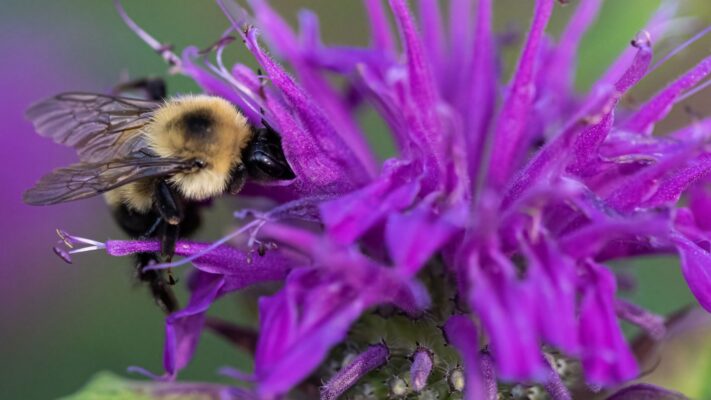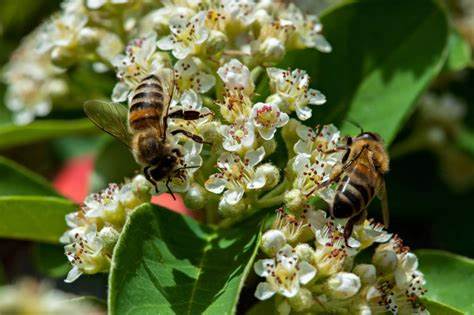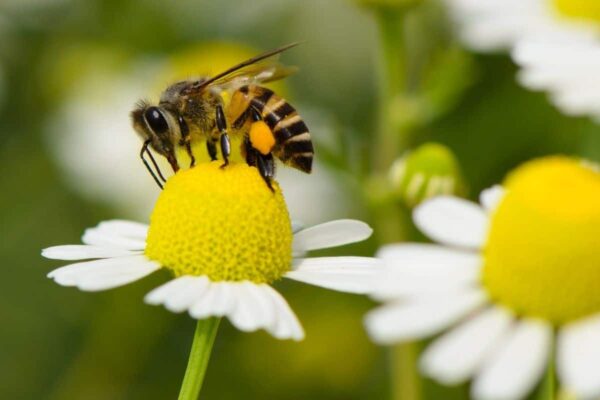Creating a garden or landscape filled with beautiful plants that attract bees is not only a wonderful way to enhance your outdoor space but also crucial for supporting the vital role bees play in our ecosystem. These industrious pollinators contribute to the pollination of countless plants, ensuring the health of both wild and cultivated flora. In this article, we will delve into the most captivating plants that attract bees, exploring their characteristics, benefits, and how best to incorporate them into your garden.

The Importance of Bees in Our Ecosystem
Understanding why plants that attract bees are so essential begins with recognizing the pivotal role bees have in our ecosystems. Beyond being mere producers of honey and wax, bees are among the most effective pollinators available, which means they significantly influence the growth of fruits, vegetables, and flowers.
The Role of Pollination
Pollination involves the transfer of pollen from one flower to another, facilitating fertilization and the production of seeds. This process is indispensable for the reproduction of many flowering plants. When bees visit flowers to collect nectar, they inadvertently carry pollen between plants, contributing to genetic diversity and the overall health of plant populations.
In gardens, bees help ensure that plants not only survive but thrive. Many crops, including apples, blueberries, cucumbers, and almonds, rely heavily on bee pollination. Without these insects, food sources would diminish dramatically, leading to disruptions in food supply chains and increased prices.
The Decline of Bee Populations
Unfortunately, bee populations worldwide have been declining due to various factors such as habitat loss, pesticide use, climate change, and disease. This decline poses significant risks to biodiversity and agricultural productivity. By incorporating plants that attract bees into our gardens, we can provide critical support for these essential creatures.
By nurturing habitats that are rich in floral diversity, we can attract and sustain bee populations. This not only contributes to environmental health but also creates a more vibrant and colorful garden space. As gardeners, we hold the power to make choices that positively impact both pollinators and our own enjoyment of nature’s beauty.
Selecting the Right Plants for Bee Attraction
When choosing plants that attract bees, it’s essential to consider not just the visual appeal but also the types of flowers that appeal to these pollinators. Different bee species are attracted to different shapes, colors, and scents of flowers.
Choosing Native Plants
Native plants are an excellent starting point when curating a bee-friendly garden. They have evolved alongside local bee populations and are well-suited to the local climate and soil conditions. Furthermore, they tend to require less maintenance and water than non-native species.
One of the most compelling reasons to select native plants is the value they offer to local ecosystems. These plants often support a wider range of wildlife, not just bees, forming complex interdependent relationships within the environment. Moreover, they can help restore habitats that have been degraded by urban development or agriculture.
Flower Shape and Structure
The shape and structure of flowers play a significant role in attracting different types of bees. Some bees, like honeybees, prefer open-faced flowers where they can easily access nectar and pollen, while others, like bumblebees, are more adept at gathering pollen from tubular flowers.
When planning your garden, consider incorporating a variety of flower types. A mix of flat, open blooms and deeper, tubular flowers can cater to a diverse array of bee species, ensuring that you support multiple pollinators. Additionally, consider selecting plants that bloom at different times throughout the growing season to provide continuous food sources for bees.

Color and Fragrance
Colors and fragrances are powerful tools that plants use to attract bees. Flowers that are blue, purple, and yellow are particularly appealing to many bee species. The bright colors contrast sharply with green foliage, making them visible from a distance.
Fragrance is another important factor; sweet-smelling flowers can lure bees in from afar. Incorporating highly aromatic plants can enhance your garden experience and create a sensory-rich environment for both you and the bees. Make sure to select fragrant varieties that thrive in your specific climate for the best results.
Popular Plants That Attract Bees
There is a plethora of plants known for their ability to attract bees, each providing unique characteristics and aesthetic benefits. Below, we explore several popular options for creating a bee-friendly garden.
Lavender
Known for its striking purple flowers and soothing scent, lavender is a favorite among gardeners and bees alike.
The delicate blossoms of lavender attract a wide variety of bees, including honeybees and bumblebees. Its long blooming period ensures that it provides sustenance from late spring through summer.
In addition to its appeal to pollinators, lavender has practical uses as well. It can be harvested for culinary purposes, used in herbal remedies, or dried for potpourri. Planting lavender in sunny spots with well-drained soil can create an enchanting display while supporting bee populations.
Coneflower (Echinacea)
Coneflowers are visually striking, featuring large daisy-like heads that come in shades of purple, pink, and white.
These resilient perennials are not only drought-tolerant but also serve as a source of food for bees throughout summer and into early fall. Their prominent central cones are particularly attractive to bees, allowing them to gather both nectar and pollen effectively.
Beyond their appeal to pollinators, coneflowers are low-maintenance and can thrive in a variety of soils. They can be integrated into wildflower gardens, mixed borders, or even as focal points in landscaped areas.
Sunflower
Sunflowers are iconic for their towering height and cheerful yellow petals, instantly bringing brightness and warmth to any garden.
These annuals are beloved by bees for their abundant pollen and nectar, attracting a range of bee species during their blooming season. Sunflowers also serve as a natural bird feeder when their seeds mature, offering additional benefits to wildlife.
Planting sunflowers in clusters can create a dramatic visual impact while maximizing their attractiveness to bees. They thrive in full sun and well-drained soil, making them relatively easy to grow.
Bee Balm (Monarda)
Bee balm is aptly named for its ability to attract bees, butterflies, and hummingbirds. With its vibrant red, pink, or purple flowers, bee balm is a stunning addition to any garden.
This perennial thrives in moist, well-drained soil and partial sunlight, making it suitable for a variety of locations. Its tubular flowers are perfect for bumblebees and other long-tongued bees, providing ample access to nectar.
In addition to its contributions to pollinator health, bee balm is valued for its medicinal properties and can be made into herbal teas or used as an antimicrobial agent. Its multi-faceted benefits make it a fantastic choice for any bee-friendly garden.

Creating a Bee-Friendly Environment
Simply planting plants that attract bees is not enough; creating a welcoming environment for these pollinators requires thoughtfulness and care.
Avoiding Pesticides
One of the most important steps in fostering a bee-friendly environment is to avoid harmful pesticides. Chemicals commonly found in pesticides can negatively impact bee populations, causing confusion, disorientation, and even death.
Consider using organic gardening methods or natural pest control alternatives to protect both your plants and pollinators. Integrated pest management strategies can also help minimize the need for chemicals while maintaining a healthy garden.
Providing Shelter and Water
Beyond food sources, bees require shelter and water to thrive. Integrating elements such as bee hotels or nesting boxes into your garden can provide safe spaces for solitary bees to live and reproduce.
Additionally, shallow dishes of water with pebbles allow bees to drink safely without the risk of drowning. Keeping these water sources clean and regularly refilled is key to encouraging bee visits.
Practicing Diversity in Plant Selection
Promoting biodiversity is essential for attracting a diverse range of bee species. By including various plants that attract bees in different colors, shapes, and blooming times, you can create an inviting atmosphere that encourages numerous pollinators to flourish.
Consider rotating plants each year, introducing new varieties, or even creating themed sections in your garden dedicated to particular plant families. This ongoing commitment to diversity enhances not only bee habitats but enriches your own gardening experience.

Conclusion
Incorporating beautiful plants that attract bees into your garden serves a dual purpose: it enriches your outdoor space and nourishes the essential pollinators that keep our ecosystems in balance. By selecting the right plants, avoiding harmful practices, and creating a supportive environment, we can positively impact bee populations and biodiversity as a whole.
As stewards of the land, we carry the responsibility of championing ecological health. With every flower planted, every bee nurtured, we contribute to a more sustainable future for both ourselves and the generations to come. Together, let’s cultivate thriving gardens that not only please the eye but also sustain the vital role of bees in our world.
